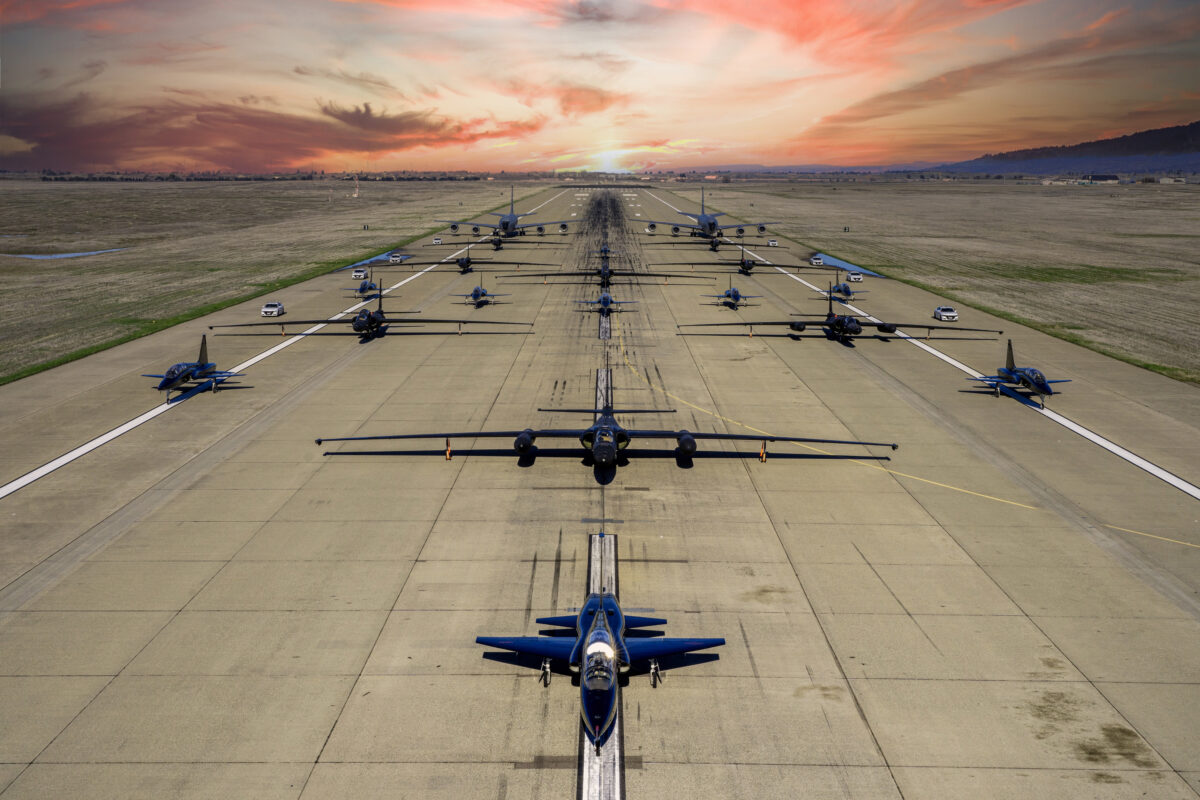They call it an “elephant walk.” It’s an exercise where a base displays all the aircraft types it supports. The walk shown here took place this month at California’s Beale Air Force Base, when the 9th Reconnaissance Wing and 940th Air Refueling Wing showed off their roster, which includes the long-winged Lockheed U-2 (right behind the Northrop T-38 Talon).
The U-2 has enjoyed a storied career since its first flight in 1955, but is now approaching retirement. The Air Force has announced it will start to phase out the “Dragon Lady” starting in 2025. Designed by Lockheed’s legendary Clarence L. “Kelly” Johnson and built by the company’s equally legendary “Skunk Works,” the airplane was intended to reach an altitude of 70,000 feet and soar through the rarified atmosphere above the Soviet Union to photograph things the Soviets did not want captured on camera. Essentially it was a glider with a jet engine, and it took naturally to the air.
During a taxi test, pilot Tony LeVier was startled when the airplane unexpectedly left the ground. “I almost crapped,” he said.
If things were tough on the ground, in the thin air at altitude things were even more difficult. U-2 pilots had to balance between flying too slowly and stalling or flying so fast the fragile craft would tear apart. They referred to the narrow envelope as the “coffin corner.”
In 1960, a U-2 set off an international incident when the Soviets shot down one piloted by Francis Gary Powers. Government officials claimed the airplane was simply conducting weather research, a cover story that fell apart when the Soviets revealed that they had captured the pilot. In later years the airplane flew reconnaissance missions over Vietnam, North Korea and elsewhere, and one was shot down over Cuba during the Cuban Missile Crisis. As the ER-2, the airplane has conducted actual weather research for NASA. But after a 70-year-career, the spyplane will finally come in from the cold.
historynet magazines
Our 9 best-selling history titles feature in-depth storytelling and iconic imagery to engage and inform on the people, the wars, and the events that shaped America and the world.


